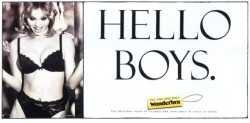This following list is a great thing to keep in mind when you are trying to catch the attention of customers - particularly over your competition.
Most of these are based on testing or research by Gallup
- When appropriate, cartoons attract most attention. They can work well on postal items like envelopes.
- Photos convince most people. It is sensible to use them if looks or credibility matters.
- Charts and statistics often attract interest - e.g. weight-loss figures or interest rates.
- People look at people.
- Responses for can double when people can see who is talking to them in adverts.
- Men look at attractive women; so do women. But women look at babies even more.
- Illustrations or pictures that relate directly to the message work on average 32% better.
- Captured TV frames from commercials are extremely effective.
- If you don't illustrate the product or the idea, your advert can be 27% less effective than average.
- Generic stereotypes - smiling business people, chatting 'friends', loving couples and ecstatic eaters can kill your adverts - they don't demonstrate and develop an uniqueness.
- If the picture has something odd about it, people remember the message - ask a newspaper photographer!
- One big picture usually attracts better than several small ones.
- Pictures should demonstrate what you are saying - Before and after pictures are particularly effective.
- Cut out pictures with 'free form' shape attract the eye better than squared-up ones.
- Don't have pictures just for the sake of it; they cost money and can divert attention needlessly.
- Research suggests that you should never use pictures that have nothing to with the product or service but seem a clever idea... There is a balance between number 11 and number 16!



